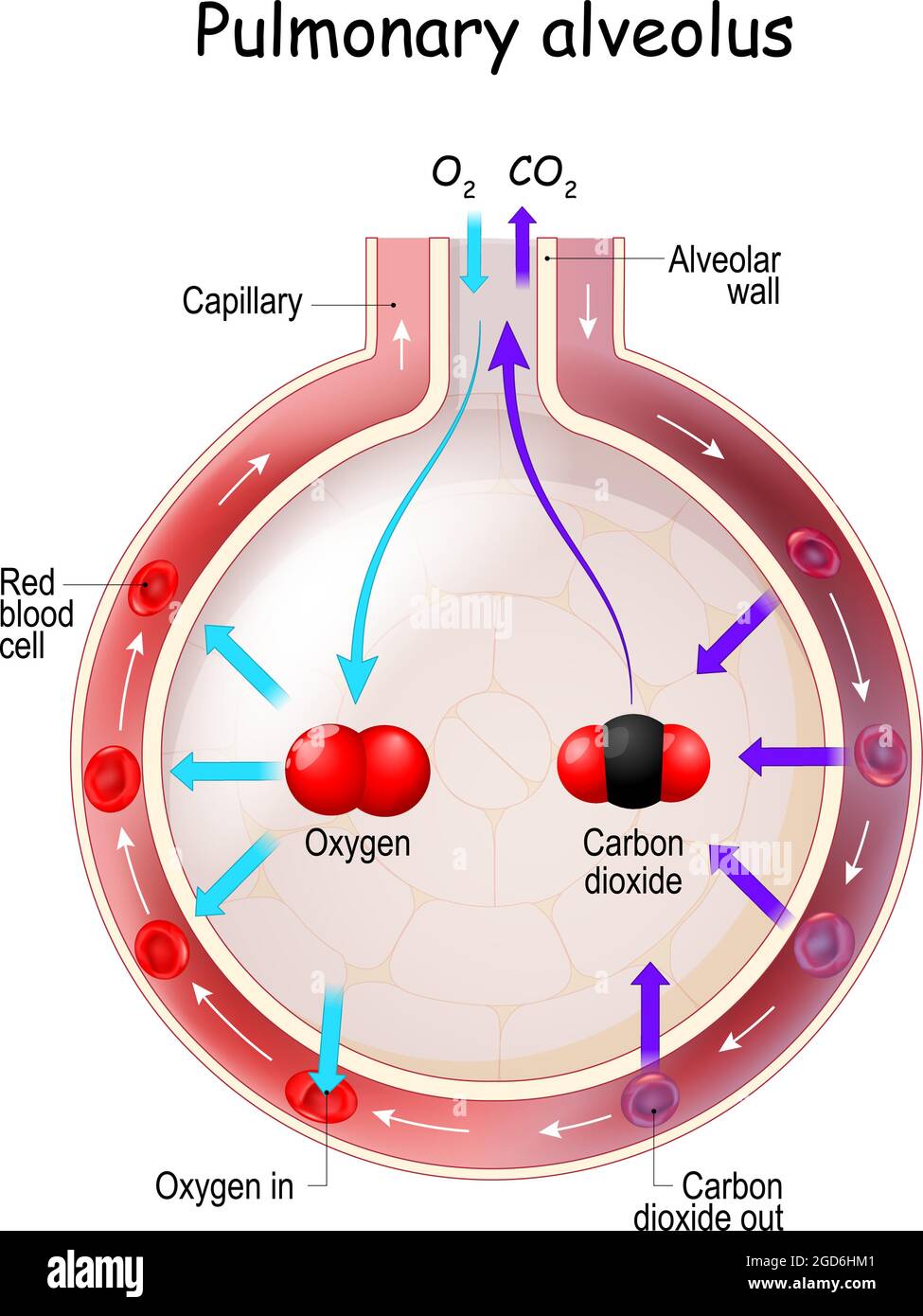
The function of the respiratory system is to exchange two gases: oxygen and carbon dioxide. Gas Exchange Between Alveolar Spaces and Capillaries Breathing in and out is accomplished by respiratory muscles (see Biology of the Lungs and Airways: Diaphragm’s Role in Breathing ). The rate at which oxygen is used by the body is one measure of the rate of energy expended by the body. During exercise, it is possible to breathe in and out more than 100 liters of air per minute and extract 3 liters of oxygen from this air per minute. At the same time, a similar volume of carbon dioxide moves from the blood to the alveoli and is exhaled. To support the exchange of oxygen and carbon dioxide, about 6 to 10 liters of air per minute are brought in and out of the lungs, and about three tenths of a liter of oxygen is transferred from the alveoli to the blood each minute, even when the person is at rest. Gas Exchange Between Alveoli and Capillaries Then the blood is pumped through the pulmonary artery to the lungs, where it picks up oxygen and releases carbon dioxide (see Biology of the Heart and Blood Vessels: Function of the Heart). Oxygen-deficient, carbon dioxide-rich blood returns to the right side of the heart through two large veins, the superior vena cava and the inferior vena cava. Oxygenated blood travels from the lungs through the pulmonary veins and into the left side of the heart, which pumps the blood to the rest of the body (see Biology of the Heart and Blood Vessels: Function of the Heart). Similarly, carbon dioxide passes from the blood into the alveoli and is then exhaled. Oxygen passes quickly through this air-blood barrier into the blood in the capillaries. This barrier between air and blood averages about 1 micron ( 1/ 10,000 of a centimeter) in thickness. The layers of cells lining the alveoli and the surrounding capillaries are each only one cell thick and are in very close contact with each other. Inhaled oxygen enters the lungs and reaches the alveoli. The primary function of the respiratory system is to exchange oxygen and carbon dioxide. New blood tests find heart attacks fast.Why Doesn’t Every Smoker Get Emphysema?.7 Tips to Avoiding Shortness of Breath When Eating.How Can COPD Be Prevented From Progressing?.What Are the Signs and Symptoms of COPD?.Emphysema: Stop smoking to prevent suffocation.When washing hands with soap and water:.Positions to Reduce Shortness of Breath.Dark Chocolate,May Reduce Blood Pressure.Deaths from Strong Prescription Painkillers Are On the Increase,.

Established Safety Profile of Spiriva Confirmed.Vitamin D Shown to Slash Belly Fat, Assist Natural Weight Loss.Inhaled Meds Save COPD/Pneumonia Patients’ Lives.Support Group Donating Tosca Monitor to Respiratory Ward.Smoke-free Campus at Sligo Regional Hospital.

Support Group Pictures Christmas Dinner 2010.Support Group Pictures/ Awareness Day 22nd June.“Love Your Lungs” Buswell Hotel Dublin 13th Feb.2012.Day Trip to Folk Park, Omagh 28 June 2012.



 0 kommentar(er)
0 kommentar(er)
